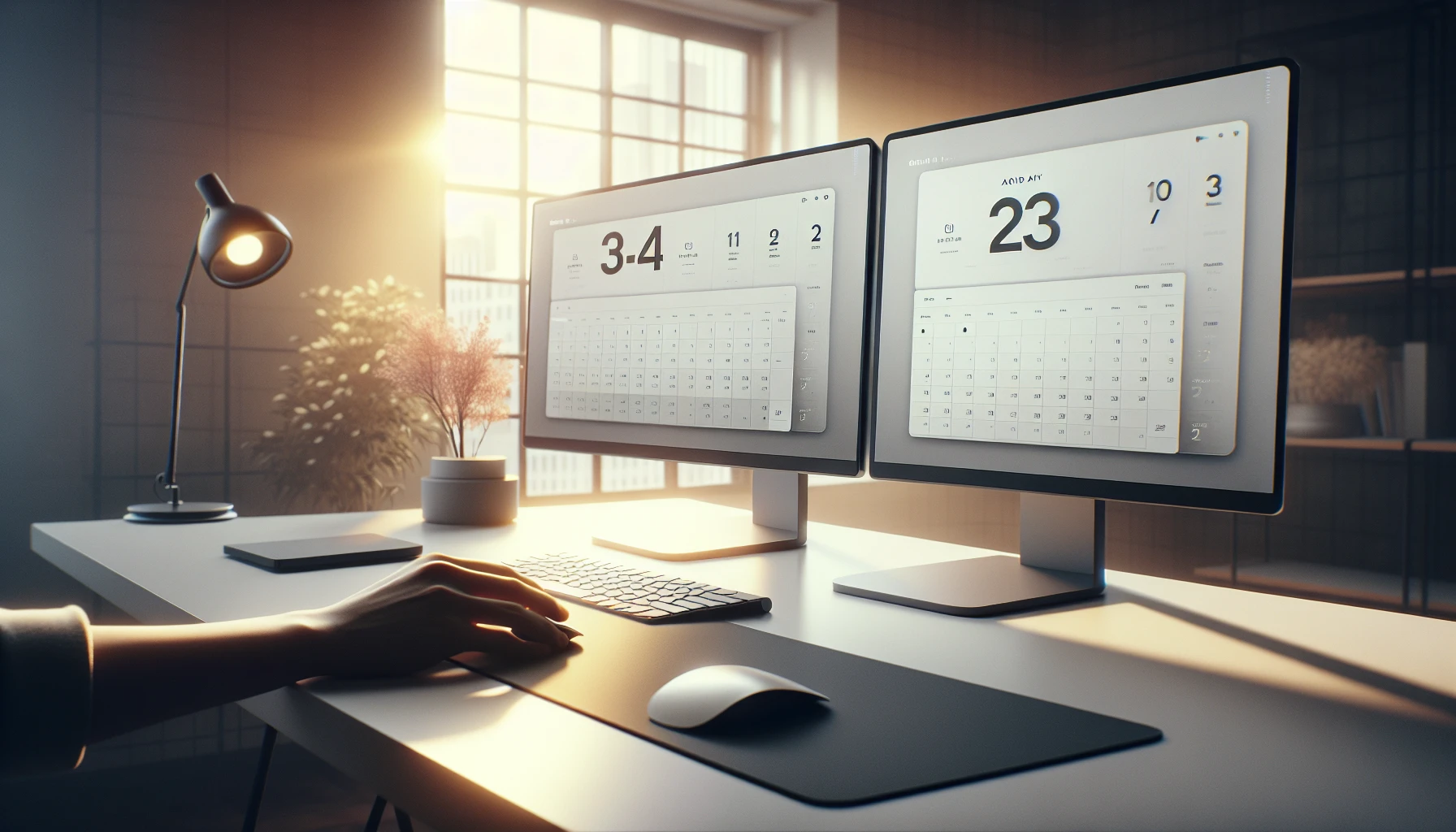· Ricardo Batista · 14 min read
Effective Meeting Notes Template for Success
Discover the importance of effective meeting notes templates and learn

Taking good meeting notes is important for successful meetings. A well-organized meeting notes template can make the note-taking process easier, ensure key points are recorded, & help with better follow-up actions. In this guide, we will look at the importance of meeting notes templates & provide insights into how to utilize them efficiently for productive meetings.
Key Takeaways
- Gathering note layouts are crucial for recording vital focuses, choices, & activity things examined during get-togethers.
- Picking the appropriate program, like Microsoft Word or Google Docs, is vital for making useful meeting notes layouts.
- Key elements of a meeting notes template include attendees, agenda, action items, and follow-up tasks.
- Ideal ways for utilizing gathering notes layouts incorporate getting ready before the gathering, effectively tuning in, & appointing activity things.
- Instances of productive gathering notes layouts could get customized for different sorts of get-togethers, like business meets or project huddles.
Introduction to Meeting Notes Templates
What Are Meeting Notes Templates?
Meeting notes templates are pre-designed formats that assist people & teams in methodically recording the crucial points, choices, & action items discussed during a gathering. These templates frequently incorporate sections for the meeting schedule, attendees, discussion topics, & follow-up tasks. By utilizing a structured template, you can guarantee that all vital information is documented consistently & efficiently.
Importance of Using Meeting Notes Templates
Using meeting notes templates offers several benefits:
Uniformity: Layouts offer a regular design, guaranteeing that every gathering is noted in a steady way. This simplifies reviewing & contrasting notes from various meetings.
Productivity: Utilizing a layout, you don’t need to commence from the beginning every instance you record notes. This conserves time & permits you to concentrate on capturing the most crucial data.
Understandability: A properly-arranged outline assists with arranging details rationally, rendering it simpler for participants & stakeholders to grasp the crucial points & follow-up tasks.
Responsibility: Through obviously recording activities & allocating duties, gathering summaries layouts assist guarantee that jobs get pursued & finished.
How Meeting Reminders Can Help
Meeting Reminders is a helpful resource that goes along with utilizing meeting notes layouts. It mechanically contacts participants when they’re tardy or absent from gatherings, saving you the trouble of manually transmitting reminder messages. Through adding the Google extension to your Google Calendar, you can guarantee that all individuals are punctual & attending, which boosts the productivity of your conferences.
For more information on how to send a meeting reminder email, you can refer to this detailed guide.
Tools and Templates
Several tools and platforms offer customizable meeting notes templates:
Microsoft Word: Gives a number of meeting notes layouts that could be simply altered to suit your requirements. You are able to download these layouts from the Microsoft Office site.
Atlassian Confluence: Provides a gathering notes layout that assists with setting plans, taking notes, & sharing action items. Find out more about it on the Atlassian website.
Google Docs: Permits you to make & share meeting notes layouts that can be jointly revised in real-time. Check out the Google Docs templates.
By utilizing these instruments & templates, you can boost the output & efficacy of your gatherings. For additional insights on meeting notes templates, visit this thorough article.
Key Elements of a Meeting Notes Template
Attendees
Noting the people there is a key piece of any gathering records layout. This part ought to rundown all members, including their names & positions. This assists with distinguishing who was available & who may require an update later.
Step-by-Step:
- Create a section titled “Attendees” at the beginning of your template.
- List the names of all participants.
- Include their roles or titles for context.
Example:
**Attendees:**
- John Doe, Project Manager
- Jane Smith, Developer
- Emily Johnson, DesignerMeeting Goals
Evidently specifying the gathering’s aims assists with establishing the proper anticipations & keeping the conversation concentrated. This part ought to outline the essential objectives of the gathering.
Step-by-Step:
- Add a section titled “Meeting Goals” after the attendees.
- List the main objectives or goals of the meeting.
Example:
**Meeting Goals:**
- Review project milestones
- Discuss upcoming deadlines
- Allocate tasks for the next sprintAgenda
The schedule is the foundation of any gathering. It offers a structured overview of the subjects to be talked about, making sure that the meeting remains focused & covers all required points.
Step-by-Step:
- Create a section titled “Agenda.”
- List the topics to be discussed in the order they will be addressed.
- Allocate time slots for each agenda item if necessary.
Example:
**Agenda:**
1. Project Milestones Review (10 mins)
2. Upcoming Deadlines (15 mins)
3. Task Allocation (20 mins)Action Items
Action items are the duties or obligations allocated throughout the gathering. This part ought to obviously record what should be finished, by whom, & by when.
Step-by-Step:
- Add a section titled “Action Items” at the end of your template.
- List each task, the person responsible, and the deadline.
Example:
**Action Items:**
- John Doe: Prepare project milestone report by next Monday.
- Jane Smith: Complete the new feature development by the end of the week.
- Emily Johnson: Design the new UI mockups by Wednesday.How Meeting Reminders Can Help
Meeting Reminders is a fantastic resource to guarantee that every participant arrives promptly & on time. It mechanically contacts latecomers when they’re delayed or absent, sparing you the inconvenience of manually transmitting reminder messages. Through integrating the Google extension into your Google Calendar, you’re able to concentrate on the gathering’s substance while Meeting Reminders manages attendance.
For more information on how to send a meeting reminder email, you can refer to this detailed guide.
By integrating these crucial components into your meeting notes layout, you can guarantee that your gatherings are well-structured, fruitful, and actionable. For additional insights on meeting records layouts, visit this thorough article.
How to Create a Meeting Notes Template
Choosing the Right Tool
Picking the right tool for making your meeting notes layout is the initial move. Diverse tools provide distinct capabilities, so select one that ideally suits your requirements.
Step-by-Step:
- Microsoft Word: Suitable for individuals who like a conventional document layout. Customizable templates are available on the Microsoft Office website.
- Google Docs: Great for real-time collaboration. Access templates directly from Google Docs.
- Atlassian Confluence: Perfect for teams using other Atlassian products. Check out their templates on the Atlassian website.
Customizing the Layout
Once you’ve picked your tool, the next move is to modify the arrangement to fit your particular requirements. A properly-organized layout guarantees that every crucial detail is recorded.
Step-by-Step:
- Open the Template: Start by opening a pre-designed template or create a new document.
- Add Sections: Include sections for Attendees, Meeting Goals, Agenda, and Action Items.
- Format Text: Use headings, bullet points, and tables to organize information clearly.
Example Layout:
**Attendees:**
- Name, Role
**Meeting Goals:**
- Goal 1
- Goal 2
**Agenda:**
1. Topic 1 (Time)
2. Topic 2 (Time)
**Action Items:**
- Task: Responsible Person, DeadlineSaving and Sharing the Template
After modifying your layout, it’s essential to preserve & distribute it with your squad to guarantee everybody is in sync.
Step-by-Step:
- Save the Template: Save your document in a shared drive or cloud storage for easy access.
- Distribute with Crew: Utilize teamwork instruments like Google Drive or Microsoft OneDrive to give the layout to your squad.
- Set Permissions: Ensure that the document permissions allow team members to view and edit as needed.
Example:
- Keep the layout in Google Drive & give your squad the link, allowing “Anyone with the link can modify” permissions.
How Meeting Reminders Can Help
Meeting Reminders is a fantastic resource to guarantee that every participant arrives promptly & on time. It mechanically contacts latecomers when they’re delayed or absent, sparing you the inconvenience of manually transmitting reminder messages. Through integrating the Google extension into your Google Schedule, you can concentrate on the gathering substance while Meeting Reminders oversees participation.
For more information on how to send a meeting reminder email, you can refer to this detailed guide.
By following these steps, you can make a meeting notes template that is both effective & simple to utilize. For more insights on meeting minutes templates, visit this comprehensive article.
Top Tools for Meeting Notes Templates
Microsoft Word
Microsoft Word is a commonly-utilized instrument for generating meeting notes layouts. It presents an assortment of customizable patterns that could be effortlessly adapted to accommodate your particular requirements.
Step-by-Step:
- Open Microsoft Word and go to the “File” menu.
- Select “New” and search for “meeting minutes” in the template search bar.
- Choose a template that suits your needs and click “Create.”
- Customize the template by adding sections for Attendees, Meeting Goals, Agenda, and Action Items.
Example Template: You can find a variety of templates on the Microsoft Office website.
Google Docs
Google Docs is a fantastic instrument for real-time cooperation on gathering remarks. It permits numerous users to revise the file at the same time, making it perfect for squad environments.
Step-by-Step:
- Open Google Docs and go to the “Template Gallery.”
- Search for “meeting notes” and select a template.
- Customize the template by adding the necessary sections.
- Share the document with your team by clicking the “Share” button and setting the appropriate permissions.
Example Template: Access templates directly from Google Docs.
Notion
Notion is a multipurpose tool which blends note-taking, task organization, & database capabilities. It provides various templates for gathering notes which could be effortlessly tailored.
Step-by-Step:
- Open Notion and create a new page.
- Click on “Templates” and search for “meeting notes.”
- Select a template and click “Use this template.”
- Customize the template by adding sections for Attendees, Meeting Goals, Agenda, and Action Items.
Example Template: Explore Notion’s templates on the Notion website.
Atlassian Confluence
Atlassian Confluence is a mighty apparatus for squads utilizing different Atlassian commodities like Jira. It tenders a gathering remarks layout that aids establish plans, take annotations, & portion action items.
Step-by-Step:
- Open Confluence and create a new page.
- Click on “Templates” and select “Meeting Notes.”
- Customize the template by adding the necessary sections.
- Share the page with your team by setting the appropriate permissions.
Example Template: Learn more about Confluence templates on the Atlassian website.
How Meeting Reminders Can Help
Meeting Reminders is a fantastic resource to guarantee that every participant arrives promptly & on time. It mechanically contacts latecomers when they’re delayed or absent, sparing you the inconvenience of manually transmitting reminder messages. Through integrating the Google extension into your Google Calendar, you can concentrate on the gathering substance while Meeting Reminders oversees participation.
For more information on how to send a meeting reminder email, you can refer to this detailed guide.
By utilizing these instruments, you can fashion productive meeting notes templates that boost efficiency & guarantee that every one critical data is seized. For additional insights on meeting minutes templates, visit this thorough article.
Best Practices for Using Meeting Notes Templates
Preparing Before the Meeting
Readiness is crucial for productive meeting records. Prior to the gathering, guarantee you possess a distinct schedule & comprehend what necessitates being noted down.
Step-by-Step:
- Set the Agenda: Outline the topics to be discussed and share it with attendees in advance.
- Choose the Right Template: Select a meeting notes template that fits the meeting’s purpose.
- Assign Roles: Designate a note-taker to ensure that all important points are captured.
Example: Use a template from Google Docs to set up your agenda and share it with your team.
Taking Effective Notes During the Meeting
Throughout the gathering, concentrate on recording crucial details, choices, & tasks. Productive note-jotting guarantees that no vital info is overlooked.
Step-by-Step:
- Follow the Agenda: Stick to the agenda to keep the meeting on track.
- Capture Key Points: Note down important discussions, decisions, and any deviations from the agenda.
- Document Action Items: Clearly record tasks, responsible persons, and deadlines.
Example: Use a collaborative tool like Notion to take real-time notes that can be accessed and edited by all attendees.
Distributing and Following Up After the Meeting
After the meeting, distribute the notes promptly and follow up on action items to ensure accountability and progress.
Step-by-Step:
- Review and Finalize Notes: Ensure that the notes are complete and accurate.
- Distribute Notes: Share the finalized notes with all attendees and relevant stakeholders.
- Follow Up on Action Items: Regularly check in on the progress of assigned tasks.
Example: Save your notes in a shared drive like Google Drive and set reminders for follow-ups using Meeting Reminders.
How Meeting Reminders Can Help
Meeting Reminders is a fantastic resource to guarantee that every participant arrives promptly & on time. It mechanically contacts latecomers when they’re delayed or absent, sparing you the inconvenience of manually transmitting reminder messages. Through integrating the Google extension into your Google Schedule, you can concentrate on the gathering substance while Meeting Reminders oversees participation.
For more information on how to send a meeting reminder email, you can refer to this detailed guide.
By adhering to these optimal methods, you can guarantee that your gathering records are thorough, actionable, & successfully conveyed. For additional insights on meeting minutes layouts, visit this detailed piece.
Examples of Effective Meeting Notes Templates
Business Meetings
Business gatherings frequently necessitate thorough documentation to guarantee that every choice & task is unmistakably noted. A properly organized layout could assist with efficiently recording all crucial details.
Step-by-Step:
- Open a Template: Use a tool like Microsoft Word to open a business meeting template.
- Customize Sections: Include sections for Attendees, Meeting Goals, Agenda, and Action Items.
- Fill in Details: During the meeting, fill in the details as per the agenda.
Example Template:
**Attendees:**
- Name, Role
**Meeting Goals:**
- Goal 1
- Goal 2
**Agenda:**
1. Topic 1 (Time)
2. Topic 2 (Time)
**Action Items:**
- Task: Responsible Person, DeadlineNonprofit Organizations
Charity groups frequently hold gatherings to talk about raising money, coordinating volunteers, & project updates. A specialized outline can assist in organizing these discussions properly.
Step-by-Step:
- Select a Template: Use a tool like Google Docs to select a nonprofit meeting template.
- Customize for Nonprofit Needs: Add sections for Attendees, Meeting Goals, Agenda, and Action Items.
- Document Discussions: Capture key points, decisions, and follow-up tasks during the meeting.
Example Template:
**Attendees:**
- Name, Role
**Meeting Goals:**
- Fundraising Strategies
- Volunteer Coordination
**Agenda:**
1. Fundraising Updates (10 mins)
2. Volunteer Coordination (15 mins)
**Action Items:**
- Task: Responsible Person, DeadlineSchool Clubs
School clubs frequently have gatherings to arrange happenings, talk about club doings, & allocate duties. A straightforward & easy-to-utilize layout can assist in maintaining these meetings structured.
Step-by-Step:
- Choose a Template: Use a tool like Notion to choose a school club meeting template.
- Customize for Club Activities: Add sections for Attendees, Meeting Goals, Agenda, and Action Items.
- Fill in During the Meeting: Document discussions, decisions, and tasks during the meeting.
Example Template:
**Attendees:**
- Name, Role
**Meeting Goals:**
- Plan Upcoming Event
- Discuss Club Activities
**Agenda:**
1. Event Planning (10 mins)
2. Club Activities (15 mins)
**Action Items:**
- Task: Responsible Person, DeadlineHow Meeting Reminders Can Help
Meeting Reminders is a fantastic resource to guarantee that every participant arrives promptly & on time. It mechanically contacts latecomers when they’re delayed or absent, sparing you the inconvenience of manually transmitting reminder messages. Through integrating the Google extension into your Google Agenda, you can concentrate on the gathering substance while Meeting Reminders oversees participation.
For more information on how to send a meeting reminder email, you can refer to this detailed guide.
By utilizing these layouts, you can guarantee that your gatherings are well-arranged & fruitful. For additional knowledge on meeting notes formats, go to this thorough piece.
Conclusion
To summarize, becoming skilled at utilizing meeting note layouts is crucial for boosting efficiency & fostering clear communication during gatherings. By incorporating vital components like attendees, agenda, action items, & follow-up tasks into your layout, you can streamline the note-taking process & facilitate better teamwork. Leveraging tools such as Microsoft Word, Google Docs, or specialized software can further enhance the ease of creating & organizing meeting notes. Recollect to tailor your layout to suit each meeting’s specific needs & consistently adhere to best practices to maximize the advantages of using meeting note layouts. With the appropriate approach & tools in place, you can transform your meetings into productive sessions that drive actionable outcomes & foster team triumph.
Conclusion
Frequently Asked Questions (FAQs)
What are the benefits of using a meeting notes template?
Using a meeting notes template can assist streamline the note-taking process, guarantee crucial points are captured, & facilitate better follow-up actions. It additionally aids in organizing information & improving meeting productivity.
How can I customize a meeting notes template to suit my needs?
Most gathering records layouts are adjustable, permitting you to add or eliminate areas in view of your necessities. You can tailor the format to incorporate explicit fields like plan things, activity things, participants, & cutoff times.
Are there any online tools available for creating meeting notes templates?
Yup, there are a number of internet resources like Evernote, Google Docs, & Notion that give layouts for gathering notes. These platforms offer user-friendly interfaces & teamwork capabilities for efficient note-taking.
How can I ensure that meeting notes are effectively communicated to all attendees?
To guarantee successful transmission of gathering summaries, it’s crucial to share the notes quickly after the meeting. You can distribute the notes through email, a shared document, or a project management tool to keep all attendees informed & responsible.
What are some best practices for taking meeting notes during virtual meetings?
Throughout digital gatherings, it’s crucial to remain attentive, utilize a straightforward & structured outline, and actively listen to attendees. Refrain from juggling multiple tasks, silence disruptions, & recap essential details to guarantee precise & thorough meeting records.



